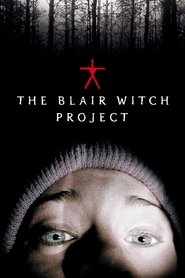Twenty-five years on, The Blair Witch Project's unique cultural context, its "presence in time and space", is crucial for interpreting this film beyond a superficial discussion of its jumpscares and its admittedly unsatisfying ending.
Despite the overuse of the "found footage" technique in modern movies which has made it significantly less impactful, the film that popularised the method remains genuinely interesting and effective when viewed in its original light. With a few exceptions, such as in Mark Z. Danielewski's near-contemporaneous literary masterpiece House of Leaves, the proliferation of this narrative device in the 2000s came with a demand for control on behalf of copycat filmmakers, thereby leading to entirely scripted scenarios and psychologically unsurprising surprises. (Still, it is prudent to remember that it took a considerable amount of time for this "glut" of found footage movies to flood movie theatres: the first Paranormal Activity was released six years later in 2007.) Either way, it is good to keep in mind that Daniel Myrick and Eduardo Sánchez hired unknown actors to do all the filming themselves within an entirely improvised and immersive experience/scenario. In that sense, The Blair Witch Project might be profitably interpreted as a piece of experimental art theatre that just happened to be filmed, rather than a piece of Cinema.
This, and many other factors, no doubt lead to the film's unique qualities that cannot be recreated by any of its highly sculpted remakes. Incidentally, "found footage" should probably viewed as a subconscious reworking of the frame narrative so beloved of gothic novels of the 19th century. However, in such novels, the reader has the choice to believe or disbelieve narrators' perspectives, whilst the seemingly objective gaze of the camera necessarily complicates viewers' interpretation of their reliability or lack thereof — we have to "believe what we see", more or less, so part of the game being played in The Blair Witch Project is to withhold what we see.
Another important part of the film's 1999 context is that The Blair Witch Project was released at the sunset of the analogue era and the dawn of the digital one, a world where the internet was new, exciting and genuinely an exciting promise. This analogue/digital tranition is literalised with the film's pseudo-documentarians choosing to use both a 16mm camera and digital one for their hike in the woods: the former being used for the serious documentary purportedly being filmed; the latter for their more subjective, "unreliable" thoughts. Indeed, a character even says something to that effect about the unreal world as viewed through the lens of the digital camera, just in case the point was not clear enough.
Furthermore, the film's famously small budget should be seen as the start of a second wave of US independent movies, a post-Indiewood resurgence after The Brothers Weinstein and Miramax (etc.) commodified and hollowed out the concept of 'the indy' in the United States throughout the 1990s.
Lastly, I'm not a horror academic, but what is noticeable even to me is that Heather is not final girl — in fact, the only thing that might be clear about the final five minutes is that she is the first to be attacked and, presumably, killed. Oh, and this film made me weirdly nostalgic for the time when viral marketing was something... authentic?

